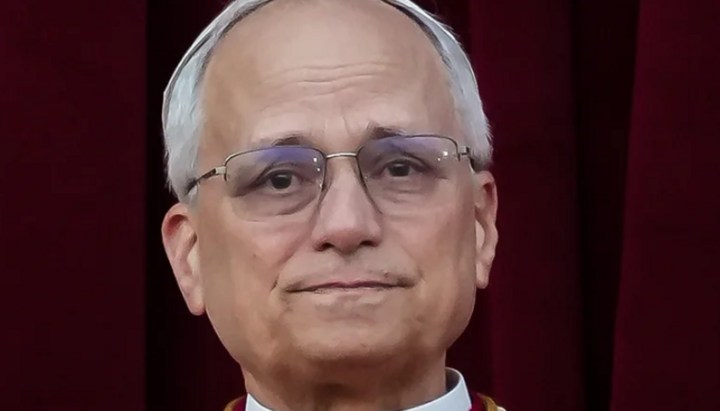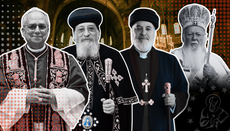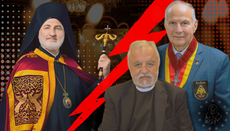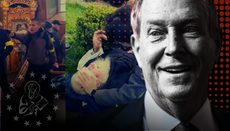Pope Leo XIV: A New Face, Same Direction?

Trads rejoiced at the fall of Francis—but Leo’s first month suggests the revolution continues, only now in red mozetta.
When Pope Leo XIV appeared on the balcony of Saint Peter’s Basilica wearing the traditional red mozetta, conservative Catholics dared to hope that the “Age of Francis” was over.
Catholics immediately began to lavish praise on their new Supreme Pontiff. One article from the National Catholic Register declared that “If Leo XIV were a new CEO, he’d be crushing it”—this, less than two weeks after his election.
But was the praise warranted?
The Rise of Cardinal Prevost
Before the conclave, conservatives took a dim view of Cardinal Robert Francis Prevost.
During an interview with Piers Morgan, Stephen K. Bannon warned: “I do think one of the dark horses, and I think, unfortunately, he’s one of the most progressive, is Cardinal Prevost. I don’t think he’s getting enough play. Prevost is one of the ones closest to Francis ideologically. He’s also had tremendous experience in Latin America, and so he’s one of the ones on the shortlist.”
The Pillar reported that Prevost’s campaign was being managed by Cardinal Oscar Maradiaga. During the 2013 conclave, this same Nicaraugan cardinal—generally seen as belonging to the Catholic Church’s liberal wing—managed the campaign for one Cardinal Jorge Bergoglio.
InfoVaticana discovered that Prevost enjoyed the support of Francis’s most (in)famous courtiers. One is Austin Ivereigh, Pope Francis’s official biographer and unofficial spokesman. The other is “Father” James Martin, the American Jesuit infamous for his efforts to normalize homosexuality in the Roman Catholic Church.
Prevost was also a close collaborator with Cardinal Blase Cupich, the Archbishop of Chicago, one of the most liberal bishops in the Catholic Church.
Leo XIV or Francis II?
Why did all of these powerful cardinals line up to support a relatively obscure American prelate?
In a recent article, Ivereigh—the papal PR man—suggested that Francis had “prepared his path”:
After his arrival in Rome in 2023 to head the Dicastery for Bishops (he had been a member since 2020), Prevost and Francis used to meet for two hours every Saturday morning in the Casa Santa Marta, where Francis lived. They discussed, of course, nominations for bishops, but also their vision of the Church. Prevost was one of Francis’s trusted negotiators with the German bishops over demands that arose from their controversial “Synodal Way” process. Francis came to rely on him more and more. He trusted Prevost’s decision-making and admired his way of working—the way he was able to reconcile different sides. Arthur Roche, the English cardinal who heads the Dicastery for Divine Worship, told me that Prevost was without doubt Francis’s “closest collaborator” in the Vatican during the past two years.
Ivereigh declares that Prevost’s election is proof that “the ‘change of era’ inaugurated by Francis is here to stay.”
According to Leo’s closest and earliest backers, he will follow the trajectory set by Pope Francis. Indeed, Francis groomed Cardinal Prevost for exactly this purpose.
The First Month
As we come to the end of Leo’s first month, is there any indication of what kind of pope he will be? Let’s look at the facts.
On May 22, Leo appointed Sister Tiziana Merletti as secretary of the Dicastery for Institutes of Consecrated Life, making her the second-most senior member of this Vatican office. Sister Tiziana will report to Sister Simona Brambilla, whom Francis appointed as president, making her the first female to lead a Vatican dicastery.
According to the Catholic Herald, Leo’s appointment of Merletti “signals continuity with Francis on women in the Church.” It notes that Leo decided to retain all of Francis’s appointments to the Vatican’s various dicasteries (or departments).
The Herald reports that, at Leo’s first general audience, “nearly all of the lectors who did the Gospel reading and summaries of his catechesis in different languages were women, with the exception of the Arabic-language lector.” The Herald also notes that, “Until recently, the readers were all men, usually clergy.”
On May 24, it was announced that the Diocese of Charlotte, North Carolina, will suppress the Latin Mass almost completely. This is in line with Francis’s (in)famous 2021 motu proprio Traditionis Custodes, which aimed to gradually phase out the traditional Roman rite.
Many conservatives hoped—and no doubt still hope—that Leo XIV will reverse Francis’s course and allow the the Latin Mass. It’s also safe to assume Bishop Michael Martin of Charlotte chose his timing carefully: he gave Leo a “test case” to see what attitude the new Pope will take going forward. So far, Leo has not moved to defend the traditional liturgy.
On May 27, Leo named Msgr. Renzo Pegoraro as the new president of the Pontifical Academy for Life. Three years ago, Pegoraro declared that suicide is the “lesser evil” in some circumstances, directly contradicting Roman Catholic teaching). That same year, he called for Rome to allow for “flexibility” on the use of contraception. He also referred to the COVID-19 vaccines—many of which were made using cells from aborted fetuses—as a form of “communal salvation.”
The End of the Beginning
It is still too early to judge Leo XIV’s papacy.
However, it does seem that conservatives may have begun to celebrate too quickly.
While Leo may have a retro sense of style, he shows every indication of furthering Pope Francis’s vision for the Roman Catholic Church.









